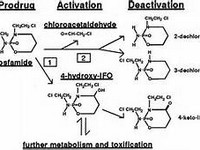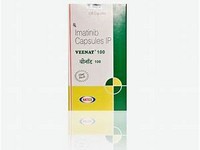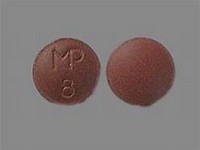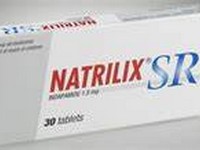hydromorphone hydrochloride

hydromorphone hydrochloride
CLINICAL USE
Relief of severe cancer pain
DOSE IN NORMAL RENAL FUNCTION
1.3 mg 4 hourly, increasing dose as requiredSR: 4 mg 12 hourly, increasing dose as required
PHARMACOKINETICS
Molecular weight :321.8 %Protein binding :7.1 %Excreted unchanged in urine : 6 Volume of distribution (L/kg) :24.4 litreshalf-life – normal/ESRD (hrs) :2.5/– DOSE IN RENAL IMPAIRMENT
GFR (mL/MIN)
20 to 50 : Dose as in normal renal function 10 to 20 : Reduce dose – start with lowest dose and titrate according to response <10 : Reduce dose – start with lowest dose and titrate according to response DOSE IN PATIENTS UNDERGOING RENAL REPLACEMENT THERAPIES
CAPD :Unknown dialysability. Dose as in GFR <10 mL/min HD :Unknown dialysability. Dose as in GFR <10 mL/min HDF/high flux :Unknown dialysability. Dose as in GFR <10 mL/min CAV/VVHD :Unknown dialysability. Dose as in GFR 10 to 20 mL/min IMPORTANT DRUG INTERACTIONS
Potentially hazardous interactions with other drugsAlcohol: can cause dose dumping with sustained release preparationsAntidepressants: possible CNS excitation or depression with MAOIs – avoid concomitant use and for 2 weeks after stopping MAOI; possible CNS excitation or depression with moclobemide; increased sedative effects with tricyclicsAntivirals: concentration possibly increased by ritonavirSodium oxybate: enhanced effect of sodium oxybate – avoid concomitant use ADMINISTRATION
Reconstition
– Route
Oral Rate of Administration
–Comments
– OTHER INFORMATION
1.3 mg of hydromorphone is equivalent to 10 mg oral morphineMetabolised to mainly hydromorphone- 3-glucuronide and some hydromorphone-6-glucuronide, which also have opioid activity, and which accumulate in renal failure. May cause neuroexcitation and cognitive impairment
See how to identify renal failure stages according to GFR calculation
See how to diagnose irreversible renal disease
Home









